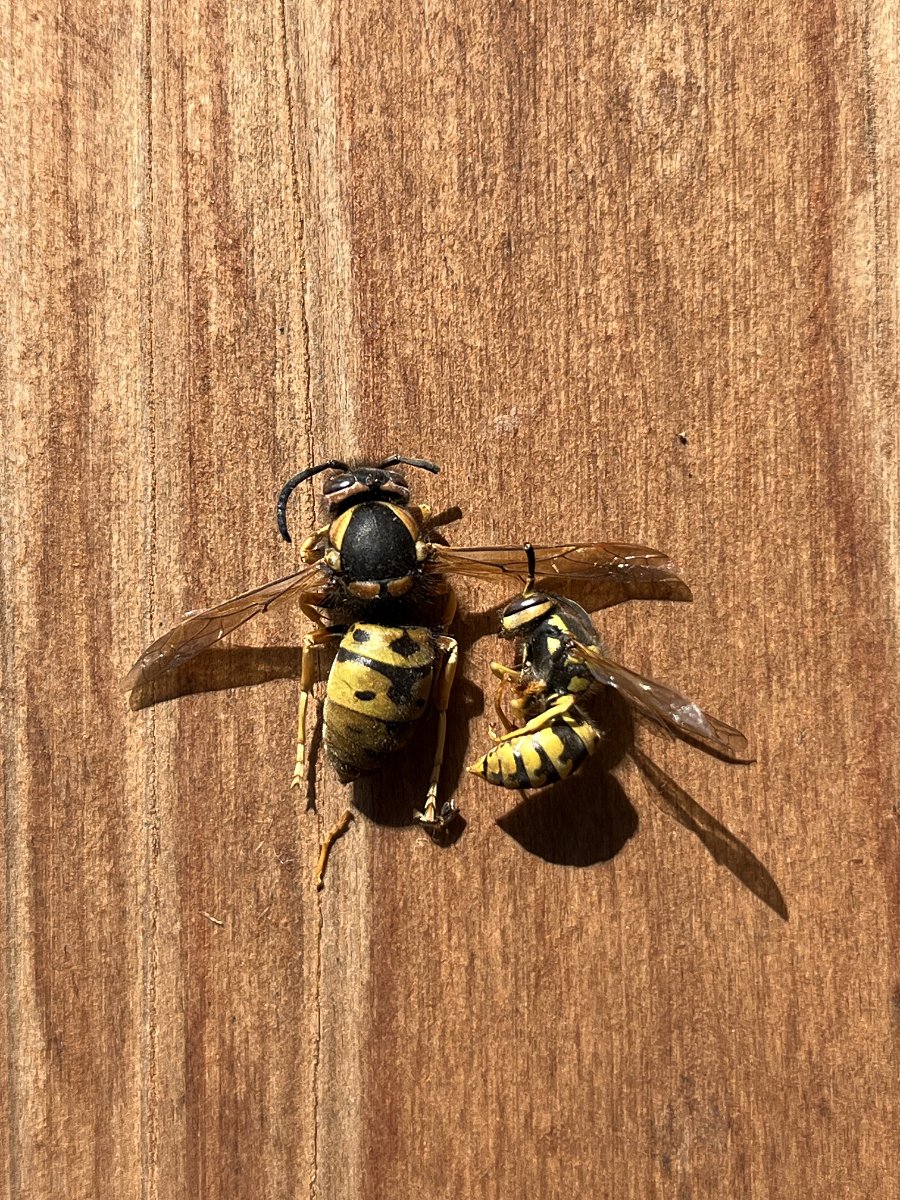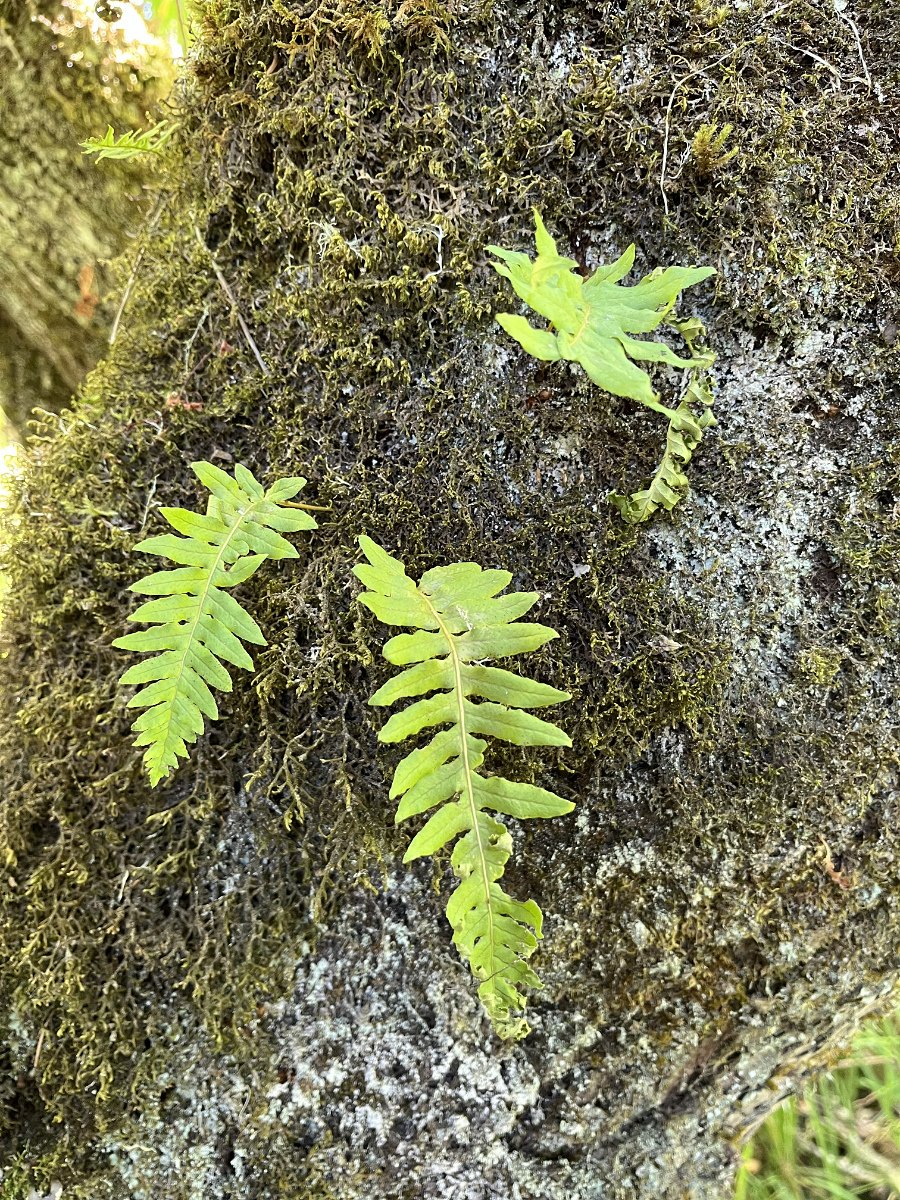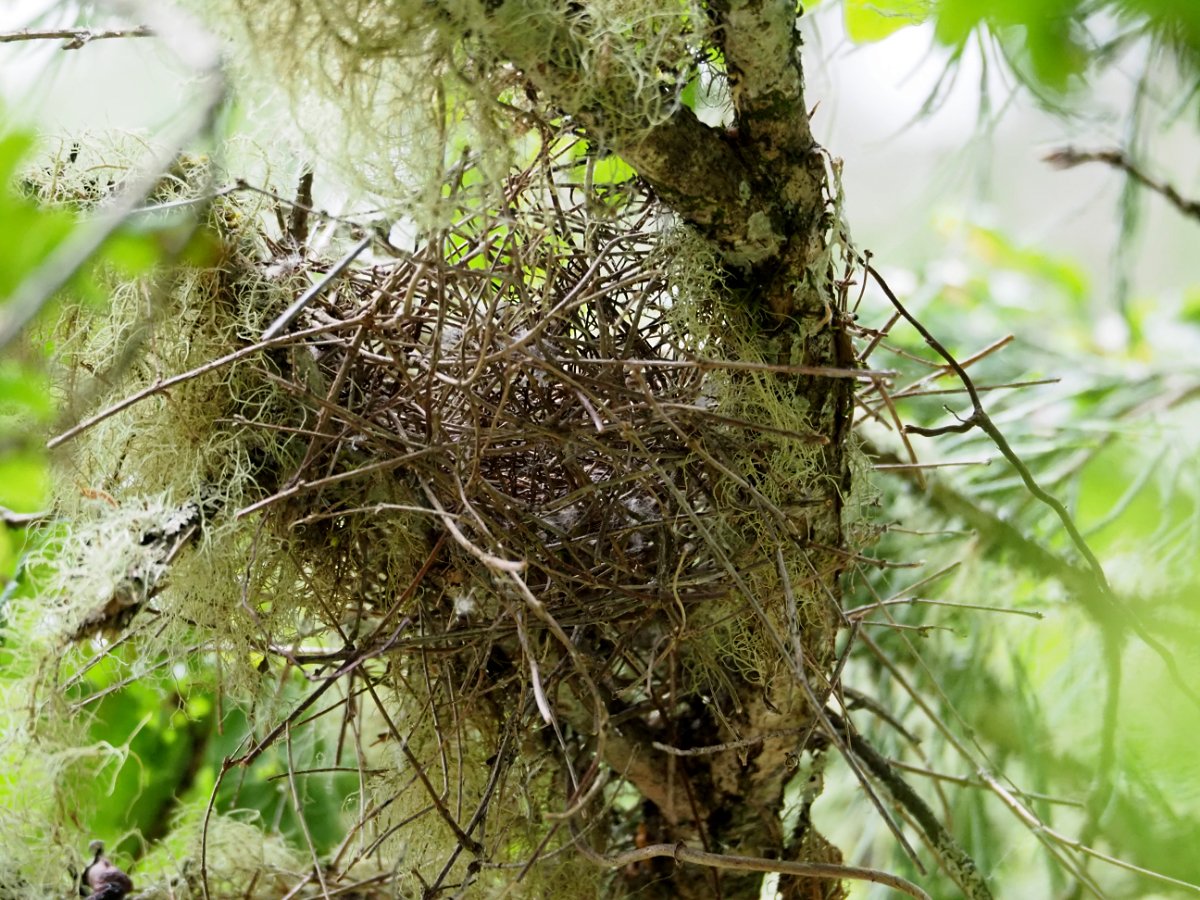In the spring, a few yellowjacket traps were set out at the arboretum to try and capture some of the queens as they emerged to start new colonies.
As a brief side note, yellowjacket nests die off in the fall here. New queens are created at the end of each summer, mate with males, and then find sheltered places to overwinter. In the spring, the queens will emerge, find a nest site, and start a new colony. Once the nest starts to become established with workers they will take over the tasks of continuing to build the nest and tending to developing larvae.
As I was saying, this would hopefully reduce the number of nests, thus reducing the number of yellowjackets during the summer months when events were taking place at the pavilion. A few yellowjackets were captured and I thought they were the queens based on the size. I have been stung by plenty of yellowjackets over the years, and I was certain they weren’t that big. I showed the yellowjackets to some people, who weren’t sure if they were queens or workers. So, I took them to the Oregon State University (OSU) Extension in town and asked them. They concluded that they were workers, not queens. Well, I decided to wait and capture more yellowjackets during the summer once the nests became more established and compare them to the ones we caught in the spring. And here are the results. The one captured in the spring is on the left and the one captured in the summer is on the right. It looks like the ones caught in the spring were indeed queens.

































































